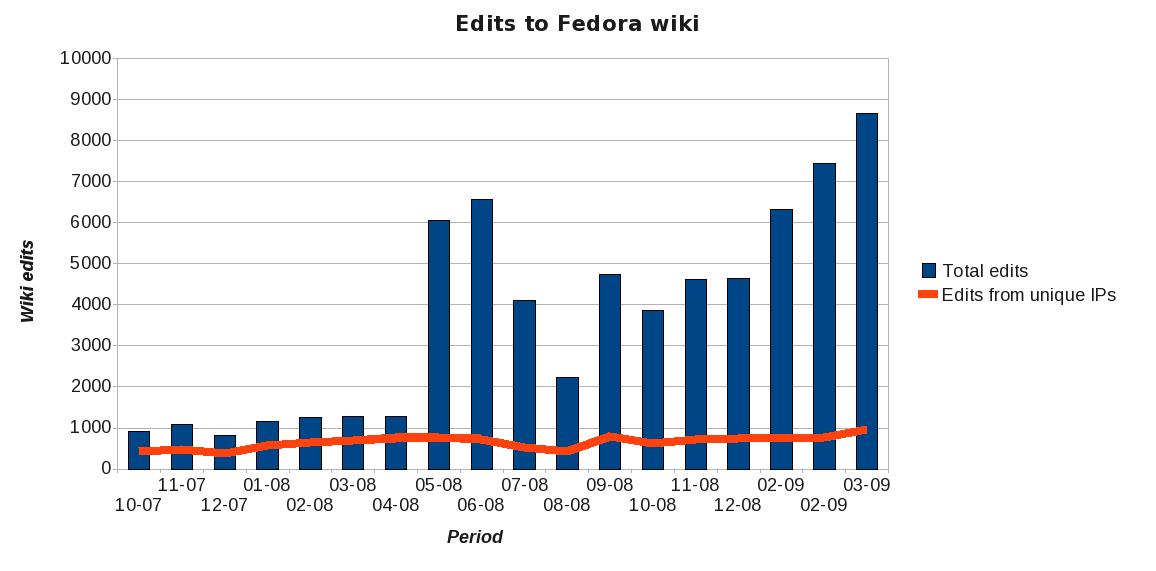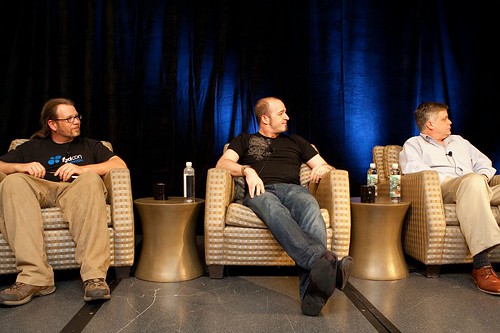The evolution of Fedora as an entity of freedom has been an interesting experience. For example, participation in the project wasn’t always as freely available as it is now. Before Core merged with Extras in Fedora 7, the only way to contribute to the central part of the distro was via an employee of Red Hat. Once again on the eve of elections for FESCo and the Fedora Board, I find myself recognizing the special and possibly unique parts of how Fedora the Project extends freedom to it’s most intimate friends, the Fedora contributors.
To vote in the general elections, we only ask of ourselves two things: agree to the Contributor License Agreement and join a contributing sub-project.
Those sub-projects are ultimately responsible for who is in those groups. They can make the barrier very high or very low. For example, in the Fedora Docs Team, we only ask people to introduce themselves to the list and request inclusion in the account group via the web application. Voilà , you are in the ‘docs’ group. At that point, without any further requirements to prove yourself, you gain the right to vote for i) Docs Team leadership, and ii) overall Fedora Project leadership. That is an appropriate level of barrier for the responsibility evident in the group. Other groups, such as the software packagers or infrastructure sysadmins, have higher barriers and more steps for being added to the account group.
This makes it ridiculously easy to participate in the voting. I like that. It means that someone who spends time helping people in fedoraforum.org can gain a vote for who runs the project without too much effort. They shouldn’t have to prove their ability or willingness to contribute to any group other than one sub-project. If the sub-project wants the lowest barriers possible, they can have that. For some groups, that means very low; you want people to be able to join and get right to translating, writing, designing, and so forth.
My reasoning is, these are thinking human beings. If they can make the decision to get an account and start working, why raise barriers to their ability to influence their own future?
What are some potential risks or downsides to this approach?
- People might game the system. This means, use the relative ease of gaining access to the system to fake a majority and take over the project.
- Making the process too easy means anyone of any intellect, background, and set of standards can gain a vote.
- If emancipation is too easy, people won’t value it.
- People might game the system by organizing in voting blocks.
How does the Fedora Project mitigate these risks?
- Firstly, simply agreeing to the CLA isn’t a human-free process. Each account that agrees to the CLA is checked by Spot (Tom Callaway, Fedora Engineering Manager.) Doing this as part of his responsibilities, Spot makes sure that each person is in fact a real person. There is also a dubious value in the gaming of the system. Once the gaming is discovered, it’s a simple matter of overriding the poisonous votes.
- Aside from the fact that is the truth for any democracy, why should we care? If we cannot attract enough people smart enough to vote well, then we have bigger problems than people voting stupidly.
- Yep, this is a problem; voter turnout for Fedora elections can be pretty poor. But the solution to that is not to raise the barriers but to convince people that what they have is very valuable, regardless of how freely it came to them. This is one reason we are having multiple elections at one time, to gain on the momentum. I am writing this post as a way of reminding Fedorans of the value of their vote.
- One of the effects of a real democracy is that people have the right to organize in voting blocks. That is not gaming the system, that is the way it works.

